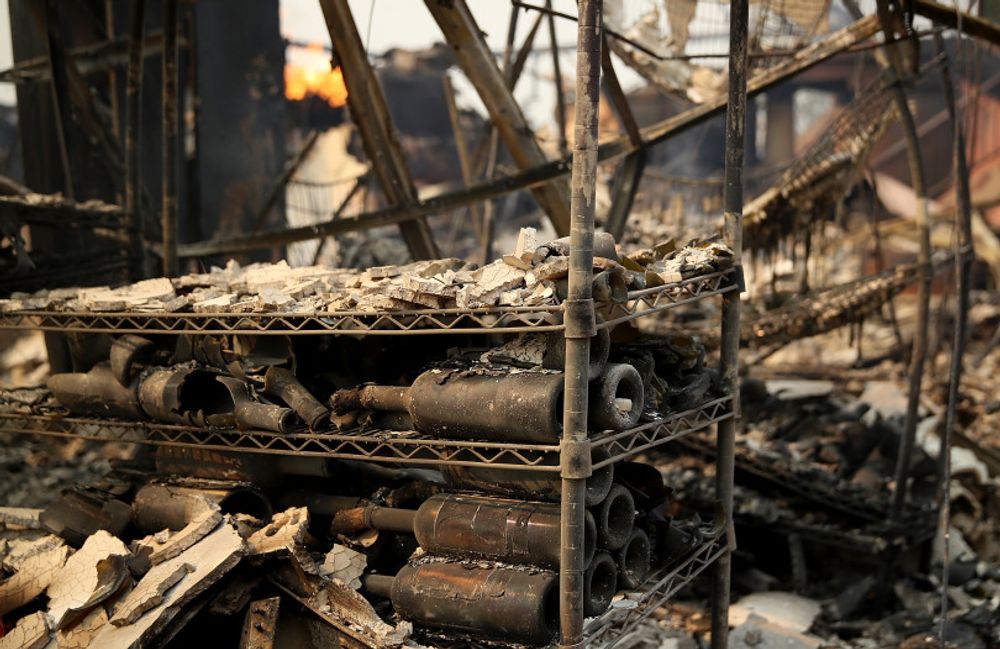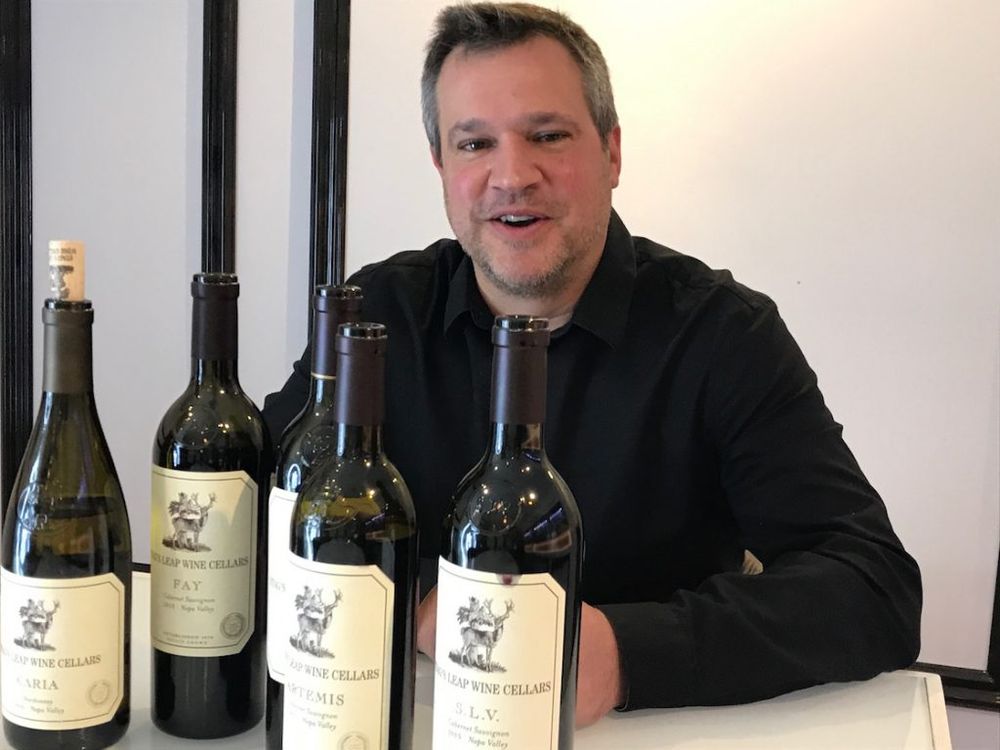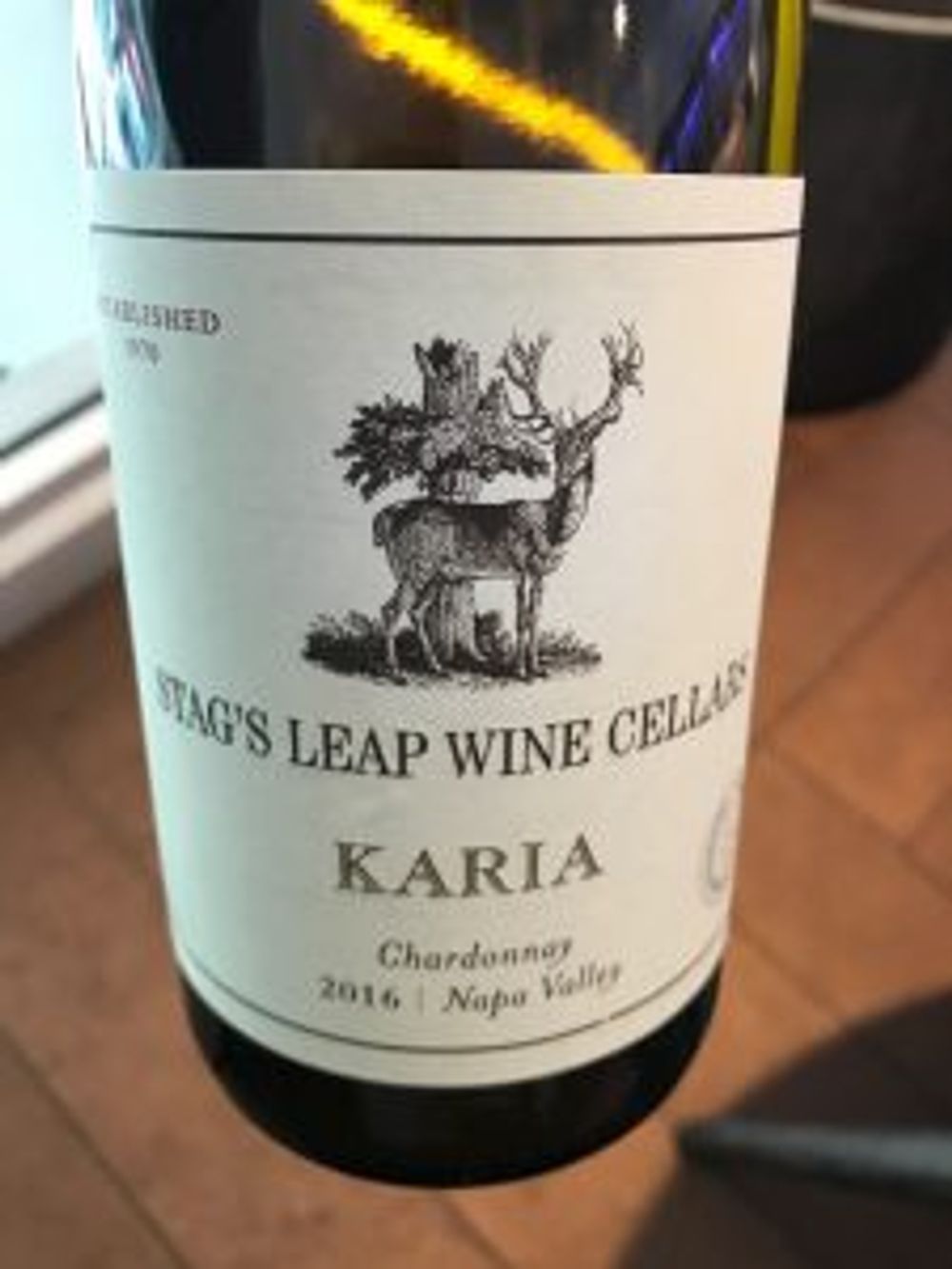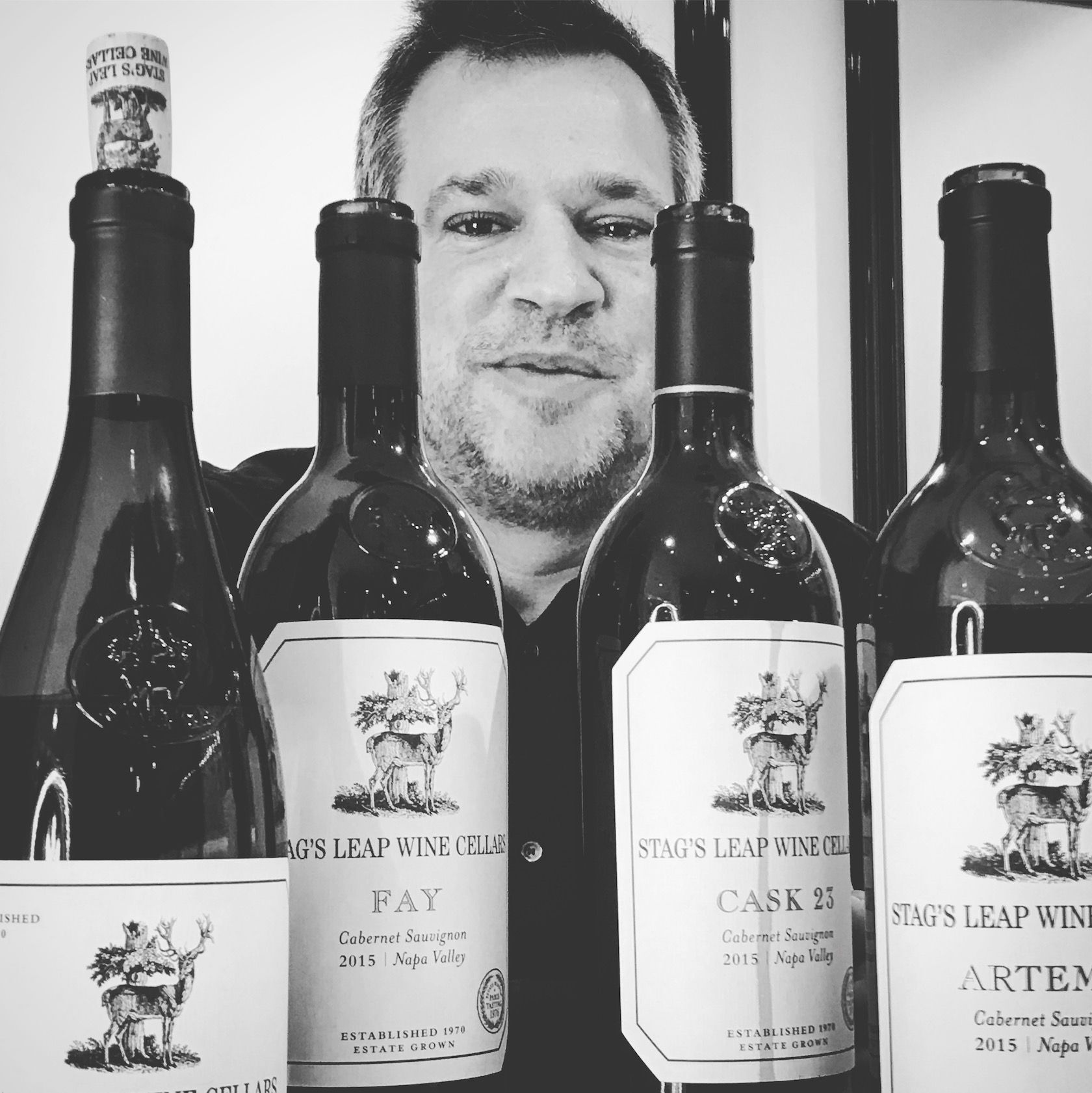Whether last year’s fires that ravaged large parts of northern California will have any long-lasting effect on the vines is still in the balance and only time will tell, says Stag’s Leap’s Marcus Notaro.
A winemaker doesn’t expect to travel to work in a full police escort with lights flashing, but in the second week of October last year that’s exactly what Marcus Notaro and his team at Stag’s Leap Wine Cellars had to face to get to their vines.
Wildfires ravished large swathes of Napa Valley and Sonoma County killing 44 people, injuring over 190 and destroying or severely damaging over 30 wineries and many residential homes.
Contrary to some reports it was the nearby (and often mistaken for) Stags’ Leap Winery that had several outbuildings burn to the ground and not Stag’s Leap Wine Cellars where, for Notaro and his team, the fires mercifully stopped just short of the edge of the property and the two vineyards – Fay and SLV. They lost some end posts and an irrigation line but, apart from that, this iconic winery was mercifully saved.

A log burns next to grape vines at the destroyed Signorello Vineyards along the Silverado Trail in Napa, Calif
“We were largely unscathed,” Marcus Notaro tells me, “the biggest difficulty for us was losing access to the winery, a power line, the cell phone towers – we lost communication. We spent a lot of time in Starbucks using their WiFi. They were crazy times. The fire burnt right down to the vineyards.”
As to whether there will be any long-term effects, Notaro thinks that only time will tell.
“With the 2017/18 vintage it is too soon to know. We had very little fruit hanging out. But we need to see if it will have any effect on growth. Bud break has not happened yet so we need to see whether the end-vines will bud out, grow new tendrils or not.”

Burned out wine bottles sit on a rack at the fire damaged Signorello Estate winery
New releases, technology and how key the vineyard manager is
As for immediately pressing matters, Notaro is in London to preview the 2015 vintages of the top Cabernets from Stag’s Leap plus a few of the portfolio’s other wines added for good measure. (For a full review and insight into how the 2015s are drinking and how Fay and SLV vineyards differ visit the site tomorrow).
An affable man in his 40s, I had heard that Notaro was the wine nerd’s best nerdiest friend – immensely knowledgeable, possessing a clear philosophy, and keen to talk at length about the tiniest detail of his wines, vineyards and thinking that goes behind what are some of the world’s best examples of Cabernet Sauvignon.
Prior to joining the Napa winery as head winemaker in May 2013, Notaro was making Cabernet Sauvignon for nine years at Col Solare in the Red Mountain appellation of Washington State where his style of winemaking was very much akin to that of Stag’s Leap – uniting Old World and New World innovations and traditions.
He is currently in the process of building a new cellar at Stag’s Leap, his wish-list is a veritable ‘boy’s toys’ list of the latest kit but when it comes down to key decisions on when to pick and how to nudge the top wines to where he wants them, he professes to not knowing the PH, rather just going on taste alone and allowing the wines to express the vineyard.

“Kirk gives me great grapes and it’s my job not to skrew them up.” Marcus Notaro, M Restaurant, London, 2018
“When SLWC was built in the 1970s it was very innovative and at the cutting edge. We still keep abreast of technological changes to make the best wine possible – looking at different cooperages, yeasts, winery equipment and so on – but in my experience the best wines are when you marry your style with what the vineyard gives you.”
Notaro is quite happy to heap praise almost entirely onto the shoulders of his vineyard manager Kirk Grace.
“The longer I’m in this business the more I realise that the vineyard is key and the vineyard manager is really key. Kirk, the vineyard manager and I, we meet weekly because it is so important to farm for the season and then time certain viticultural practices accordingly – leafing, dropping fruit, irrigation.”
“I would be happy giving all the credit to Kirk – he gives me great grapes and it’s my job not to skrew them up.”
So what made him leave Washington State to take up the position at Stag’s Leap?
“I wanted to expand my knowledge. These vineyards, Fay and SLV, have a unique personality and I wanted to make wines that express the place and that was the same sort of thing I was trying to do at Col Solare.”
“It’s fun working with a vineyard like SLV that has a library, opening the older bottles from the 1970s and 80s and seeing there is that dusty cocoa powder, there is that tobacco. Fay has a different character it is more perfumed with cinnamon and bright berry. When we released the 2015 – the 25th year that we have been doing it – it was fun to open some of the 1995 and there it is, there is that perfume.”
How to get old gracefully
The importance of a wine’s age-ability Notaro attributes to the influence of Antinori, when Notaro was at Col Solare.
The key, Notaro believes, is that the more balanced a wine is the better it will age “so you don’t need it to make it undrinkable for good age-ability,” he laughs.
It is with ageing that he feels a keen pressure to deliver, given that the top-end Cabernets he makes at Stag’s Leap are being bought as special occasion wines – 21st birthday presents and so on.
“This is very important to me – I hear stories about how amazing our wines were that were bought 20 years ago as anniversary presents so I want these wines to age – if someone is going to fork out to buy them and open them on their kid’s 21st they better damn well deliver.”

The start of the Stags Leap District, heading North on the Silverado Trail
There are three key factors, he believes that will help the wines age.
“One is the site, and I think our site provides us with grapes that are agreeable,” he says modestly, “Then there are the long, cool nights in Stag’s Leap – the grapes come in with a nice level of natural acidity. The style we are trying to make these wines in, yes they are rich and have a lot of flavour but they’re not over the top, and then the third part is the cellar that is the more boring part of age-ability but it’s true – how we handle the wines, how we manage the barrels, how we care for the wines.”
As for the grapes, Notaro works with a mix of estate fruit and bought-in, particularly on the more entry level wines, the Karia Chardonnay and the Cabernet Sauvignon Artemis.
“With Fay and SLV we have about about 100 acres that are right at the winery, then we have another 40 acres on Danika Ranch at Oak Knoll – Sauvignon Blanc and some Chardonnay – then the fourth vineyard, that is about 80 acres at Twin Creeks planted red to support Artemis. We use those and then we have contracts with other growers around the valley.”
“With the vineyard sources for Karia (which has been made since the early 1980s) about a quarter of the fruit comes from Oak Knoll, a quarter comes from down in Carneros (a cooler area that produces fresh fruit with bright acidity) a quarter comes from Atlas Peak – from there we have a more lemony, limey character and the wines are fairly rich and then the balance comes from the Coombsville area which produces a unique style – floral, honeysuckle, bright fruit, bright acid.”

“90% of Karia is barrel-fermented, I do 10% in stainless on purpose that blends back some fresh fruit into the blend, about a third is new French oak and we keep it on the lees for about seven and a half months. The rest is vinified in older French oak, all separately.”
“Trying to make this wine and our Sauvignon Blanc (made since the 1970s) that has some complexity, the flavours are in proportion, I like to make wines where there is a lot going on, if there are some lingering flavours or complexities, people want to talk about them and come back and taste them again, and also be something that will pair very well with food.”
Notaro also says that he has been adjusting the Chardonnay since he joined Stag’s Leap to add a bit more fruit and roundness.
“The vineyard sources are pretty stable, I like how they match up, I’ve been down here for five years, you get very different styles of Chardonnay – big fat and very lean – and I think we had been on the very right, very lean side, so I wanted to make the wine more accessible, more rounded, with a little bit more fruit, this is fairly consistent with what we did with 2015, 14 is a little bit richer and with this you have to find the needle where the wine wants to be.”
- Stag’s Leap has been sold and distributed in the UK solely through Enotria&Coe since 2015
- The Stag’s Leap portfolio comprises the Estate Collection – the single estate wines SLV, Fay and Cask 23 Cabernets – the Napa Valley Collection – Karia, Artemis and Aveta – and a series of winery-only Exclusives.
- As the names suggest the Napa Valley Collection are wines made from fruit grown in a variety of locations whereas the Estate Collection is from fruit grown on the estate-owned SLV and Kay vineyards that are neighbours, bordering onto one another, but are worlds apart in what the terroir delivers. Cask 23 is the blend of the best of the two and the pinnacle of the portfolio with the proportion of SLV and Kay varying vintage to vintage.
































